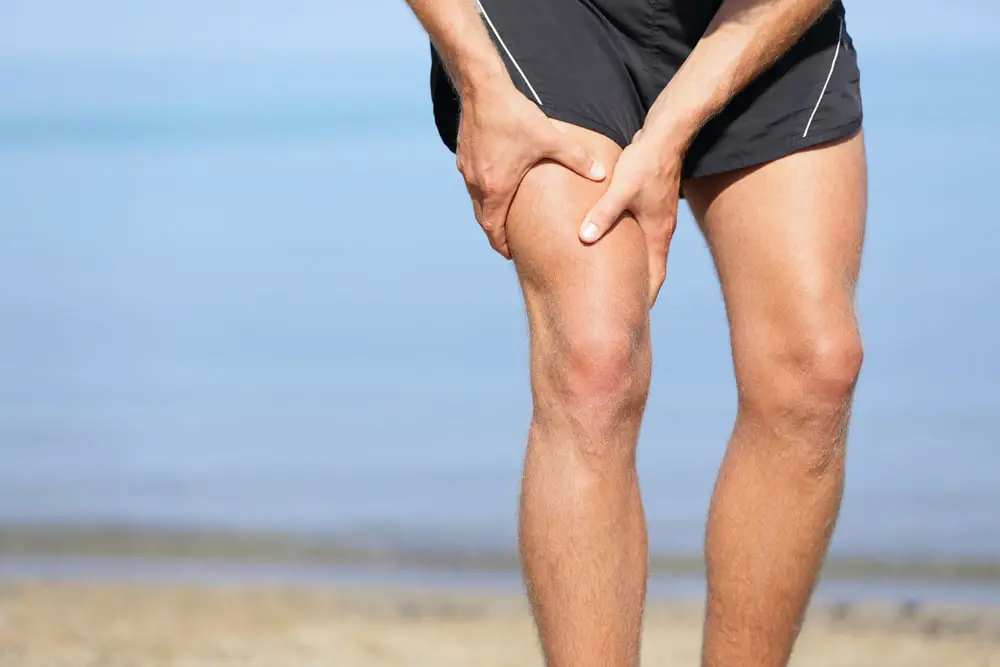
Understanding Vein Health & Vein Disease
Vein Disease Vein disease is progressive and will get worse over time if left untreated. If you have symptoms that indicate vein problems, don’t wait
If you experience restless legs at night, you’re not alone. In fact, Restless Leg Syndrome (RLS) affects about 8% of the U.S. population. And for some of these people, RLS may be a manifestation of underlying vein disease.
Getting a good night’s sleep seems to be more challenging than ever. Some of us open our phones or turn on our TVs the moment we climb into bed. For others, the distractions are internal. But what if you’re having trouble lying still because you can’t stop moving your legs?
Restless Leg Syndrome (RLS), also known as Willis-Ekbom disease, is a complex neurological and sleep disorder that causes an irresistible urge to move one’s legs. The condition usually affects people during periods of rest or inactivity — particularly at night.
Individuals with RLS may experience uncomfortable sensations such as leg pain or leg cramps. While surrendering to the overpowering need for movement temporarily relieves these symptoms, the constant urge can significantly impact relaxation and sleep quality.
Medical professionals recognize two types of RLS:
Has your quality of life been impacted by RLS? In this guide, we will help you understand its causes, your symptoms, and the various RLS treatment options available for relief.

The mechanisms behind RLS remain somewhat mysterious to medical researchers, but scientific evidence suggests a genetic link. For many individuals, a family history of RLS increases the likelihood of experiencing its symptoms. However, RLS can also be triggered by various health factors and lifestyle choices.
Key factors that may contribute to RLS include:
Recognizing the symptoms of RLS is the first step toward diagnosis and treatment. It manifests itself as a distinct physical urge, typically during periods of rest. As a result, it can significantly impact your ability to sleep, leading to daytime fatigue and decreased quality of life if not treated.
Common RLS symptoms include:
RLS Symptoms typically worsen at night. You may experience:

“The staff is wonderful. They are so easy to talk to and answered all my questions. They make you feel like your family. Dr. Gilvydis is very compassionate and funny. He and his staff work so well together.”
Jodi – Geneva, IL
“Dr. Gilvydis and his entire staff are amazing! Very professional and helpful along the way. Answered all my questions and made the process so easy. I would without a doubt, recommend Gilvydis Vein Clinic to anyone!”
Mary J. – Geneva, IL
“Truly positive experience. My family doctor highly recommended procedures through Gilvydis Clinic. Happy I did not have to wait weeks for an appointment.”
Christina – Naperville, IL
While there is no cure for RLS, you can significantly improve your quality of life through a combination of lifestyle changes, self-care practices, and medical treatments.
Due to its slower progression, early-onset RLS often responds well to lifestyle modifications and targeted treatments. Late-onset cases are more likely to stem from underlying medical conditions rather than genetic factors, making it important to identify and address contributing health issues for effective management.
Exercise and movement play a critical role in managing RLS symptoms. Regular physical activity is proven to be one of the most effective, natural RLS treatments for reducing severity. Consider incorporating these movement habits into your daily routine:
Making thoughtful changes to your health habits can also alleviate RLS symptoms:
While lifestyle changes are the foundation of RLS treatment, there are medications and other professional treatments available for additional relief. Consult with your healthcare provider about medications that may help, such as:
Schedule regular check-ups to:
Gilvydis Vein Clinic is here to support you in exploring RLS solutions for restored rest and quality of life. Effective treatment begins with a clear understanding of your symptoms and whether or not vein disease is a contributing factor.
Simple lifestyle changes can help manage RLS. Try these tips for relief:
Restless legs syndrome (RLS) often flares up in the evening due to your body’s natural 24-hour clock. As night approaches, your brain’s levels of dopamine, a chemical that helps control muscle movement, naturally decrease.
This dip in dopamine, combined with periods of rest from sitting or lying down, is the primary trigger for the uncomfortable leg sensations. Fatigue can also make the symptoms feel more intense.
While there is no single cause for all cases of restless legs syndrome (RLS), most are linked to two primary factors:
RLS is believed to be related to how the brain uses dopamine, a chemical that controls muscle movement. Insufficient iron can disrupt dopamine levels, triggering the urge to move your legs.
Several conditions cause leg discomfort that can be confused with RLS. The main differences are the type of sensation and what brings relief.
Common RLS mimics include:

Vein Disease Vein disease is progressive and will get worse over time if left untreated. If you have symptoms that indicate vein problems, don’t wait

What Causes Leg Pain at Night? If you’ve ever asked yourself “why do my legs hurt when I lay down,” you’re not alone. Many people
Whether you’re seeking relief from discomfort or looking to restore your confidence, Gilvydis Vein Clinic offers safe, fast, and effective varicose vein surgery solutions. Our expert team is here to guide you every step of the way—from diagnosis through recovery.